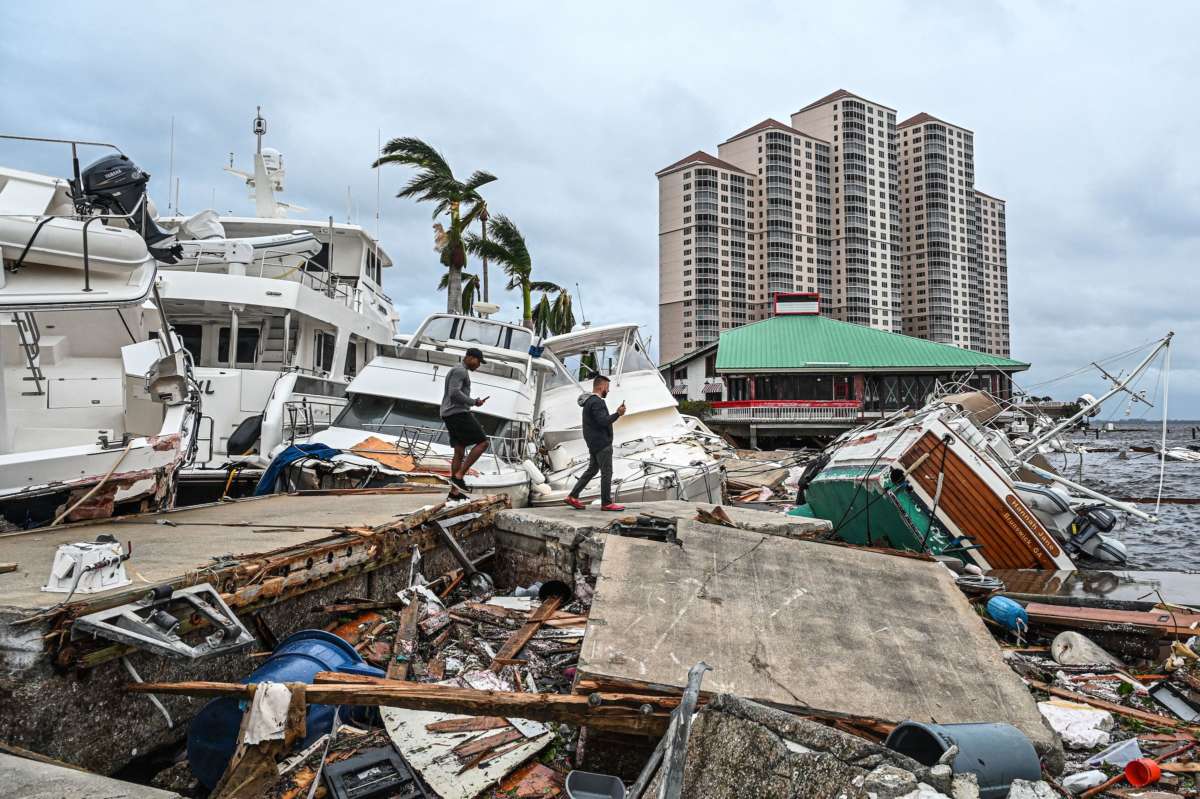President Joe Biden approved a disaster declaration in Florida on Thursday morning as Hurricane Ian, now downgraded to a tropical storm, swept through the state in a record storm surge, leaving homes destroyed and millions without power.
The storm surge was record-breaking in some areas of Southwest Florida, causing flooding and up to 155 mph wind gusts. Just shy of a Category 5 storm, Ian hit Florida as a Category 4 storm, one of the strongest to hit the southwestern part of the state. It raged through the central part of Florida on Wednesday and Thursday, hammering the central and eastern parts of the state with floods even as it was downgraded to a tropical storm early Thursday morning.
The death toll of the hurricane is unknown, though the county sheriff for Florida’s Lee County, one of the worst-hit areas, predicts that the death toll could be in the hundreds, and said that there are thousands of people waiting to be rescued — many of them stranded and unable to evacuate. According to Federal Emergency Management Agency Administrator Deanne Criswell, there are nine hospitals in Lee County that didn’t have water as of Thursday morning.
Biden’s emergency declaration unlocks funding and federal resources for provisions like temporary housing and property loss in nine counties. The White House may approve an emergency declaration for more areas of the state as the storm continues on its path north into Georgia and the Carolinas.
The National Hurricane Center is expecting Ian to restrengthen into a Category 1 hurricane on Thursday and into Friday. The governors of Georgia, South Carolina, North Carolina and Virginia have all preemptively declared a state of emergency over the storm.
Ian was likely worsened by effects of the climate crisis. Warmer water temperatures in the Atlantic “turbocharged” the storm, as The Associated Press wrote, allowing the storm to gain more strength at a faster pace than if the waters hadn’t been warmed by greenhouse gas effects. Such conditions have almost certainly been causing storms like Ian to be stronger, and for strong storms to hit more often, climate experts say.
Indeed, storm hunters and experts have noted that Ian has been remarkable in many ways. One hurricane hunter, Nick Underwood, noted remarkable amounts of lightning around the eye of the storm, which had cycled and rapidly and severely intensified the storm on Tuesday night as it approached Florida.
*RARE* first person view of storm surge. This camera is 6 feet off the ground on Estero Blvd in Fort Myers Beach, FL. Not sure how much longer it keeps working. You’ll see it live only on @weatherchannel #Ian pic.twitter.com/WwHtvgVxjY
— Mike Bettes (@mikebettes) September 28, 2022
According to PowerOutage.us, about 2.6 million customers in Florida were without power as of Thursday morning, largely concentrated in southwestern parts of the state but spreading to the eastern coast as well. Many people have lost access to water or are under boil advisories.
Before the storm hit Florida, it made landfall in Cuba, where it knocked out power for the entire island with winds of up to 125 miles an hour. At least two people were killed.
Join us in defending the truth before it’s too late
The future of independent journalism is uncertain, and the consequences of losing it are too grave to ignore. We have hours left to raise the $12,0000 still needed to ensure Truthout remains safe, strong, and free. Every dollar raised goes directly toward the costs of producing news you can trust.
Please give what you can — because by supporting us with a tax-deductible donation, you’re not just preserving a source of news, you’re helping to safeguard what’s left of our democracy.
